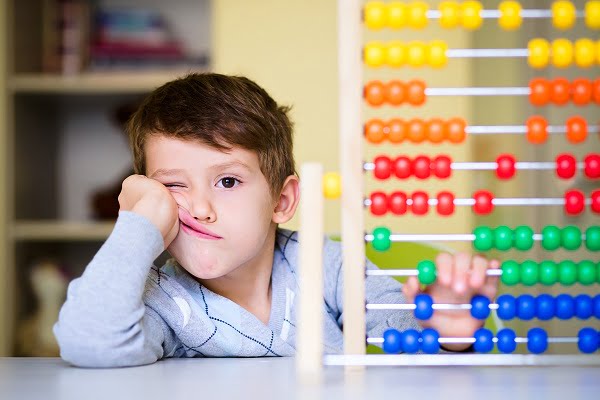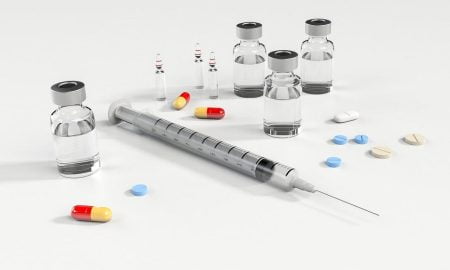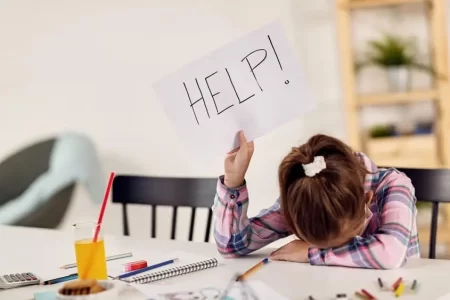
What is Attention deficit hyperactivity disorder (ADHD)?
Attention deficit hyperactivity disorder (ADHD) is a neuro-developmental disorder characterized by high levels of hyperactivity, impulsivity and lack of attention. ADHD usually affects teens and children and in more than three quarter of cases, the symptoms continue into adulthood.
Children with attention deficit hyperactivity disorder are very hyperactive and also cannot control their impulses and such behaviors affect their personal as well as academic lives. ADHD has been found to be more common in boys than girls.
In 1902, medical science first documented children exhibiting hyperactivity, inattentiveness and impulsivity. From then on the disorder has been called by several other names like hyperkinetic reaction of childhood, minimal brain dysfunction and attention-deficit disorder with or without hyperactivity. Later, it was renamed as attention-deficit/hyperactivity disorder or ADHD and this name reflects the two main important characteristics of the disorder i.e impulsivity and hyperactivity.
Usually, ADHD is diagnosed in early years of school when the child is found to be having problems in paying attention.
If ADHD is not properly treated and identified, affected individuals may face serious consequences like depression, failure in jobs, relationship issues, accidental injuries, school failure, delinquency etc.
People with ADHD can become very successful in life if the disorder is not properly identified and treated. Therefore, early identification and treatment of the condition is important.
Based on the intensity of symptoms in an individual, ADHD can be of three different types:
Predominantly Inattentive Presentation
People with this type of ADHD show following symptoms:
- Difficulty in sustaining attention
- Difficulty in following instructions
- Forgetful in daily activities
- Highly impulsive and hyperactive nature
- Avoid tasks requiring constant mental effort
- Easy distraction
- Make careless mistakes and often lose things
- Difficulty with organization
Predominantly Hyperactive-Impulsive Presentation
Individuals with this type of ADHD present following symptoms:
- Difficulty in remaining seated
- Extreme restlessness in adults while as children run and climb excessively
- Difficulty in performing tasks quietly
- Excessive talking
- Interrupt others
- Often squirm in chair
- Fidget with feet or hands
- Blurting answers before the completion of questions
- Difficulty in waiting for their turn during any task
Combined Presentation
Individuals with this type of ADHD meet the criteria for both Predominantly Inattentive Presentation and Predominantly Hyperactive-Impulsive Presentation.
Signs and symptoms of ADHD
Individuals with ADHD usually show following signs:
Impulsivity
- People with ADHD usually act without thinking
- They cannot wait for their turn, for example when playing a game.
Hyperactivity
- Restlessness followed by fidgety
- Try to do multiple tasks at once
- Bounce from one activity to another
- Are unable to sit still
Inattention
- Problem in learning new things
- Difficulty in concentrating
- Problem in listening to others
- Problems in organizing and finishing tasks on time
- Are better in some tasks than others
Facts about ADHD: Data, Statistics, Prevalence
Some important facts about ADHD are:
- ADHD symptoms ideally appear between the ages of 3 and 6 years
- The average age for diagnosing ADHD is 7 years old
- Males are almost three times more likely to be diagnosed with ADHD than females
- Almost 4% of adults in America deal with ADHD on daily basis, so it is not merely a childhood disorder
Data and statistics of ADHD
- From 2003 to 2007, the percentage of children diagnosed with ADHD has increased from 7.8% in 2003 to 9.5% in 2007.
- Also the percentage of ADHD diagnosed children has increased by 11.0% in 2011 to 2012.
- More over at the time of survey, the number of young children who had ADHD has also increased by 50% from 2007-2008 survey to 2011-2012 survey.
According to a report in 2016, the statistical analysis of ADHD affected children in different age groups shows following results:
- Approximately 9.4% children between the age group 2-17 years
- Approximately 388,000 children between the age group 2-5.
- 2.4 million children between the age group 6-11
- 3.3 million children between the age group 12-17
Prevalence of ADHD
In the United States, analysis of data collected by National Health Interview Survey (NHIS) showed the prevalence rates of diagnosed ADHD among children and adolescents aged 4 to 17 in the past twenty years as follows:
Prevalence by age group (percent)
| Year | Overall | Ages 4-11 | Ages 12-17 |
|---|---|---|---|
| 2015-2016 | 10.2 | 7.7 | 13.5 |
| 2015-2016 | 10.2 | 7.7 | 13.5 |
| 2013-2014 | 9.4 | 7.9 | 11.3 |
| 2011-2012 | 9.6 | 7.7 | 12.0 |
| 2009-2010 | 9.0 | 6.9 | 11.9 |
| 2007-2008 | 8.1 | 6.1 | 10.8 |
| 2005-2006 | 7.5 | 6.0 | 9.3 |
| 2003-2004 | 7.3 | 5.8 | 9.3 |
| 2001-2002 | .2 | 5.9 | 8.9 |
| 1997-1998 | 6.1 | 5.3 | 7.2 |
Prevalence by gender (percent)
| Year | Boys | Girls |
|---|---|---|
| 2015-2016 | 14.0 | 6.3 |
| 2013-2014 | 12.8 | 5.8 |
| 2011-2012 | 13.6 | 5.4 |
| 2009-2010 | 12.2 | 5.7 |
| 2007-2008 | 11.3 | 4.8 |
| 2005-2006 | 10.6 | 4.2 |
| 2003-2004 | 10.2 | 4.3 |
| 2001-2002 | 10.3 | 4.0 |
| 1999-2000 | 9.4 | 3.4 |
| 1997-1998 | 9.0 | 3.1 |
Prevalence by race/ethnicity (percent)
| Year | Hispanic | Non-Hispanic white | Non-Hispanic black | Other |
|---|---|---|---|---|
| 2015-2016 | 6.1 | 12.0 | 12.8 | 7.7 |
| 2013-2014 | 6.1 | 11.4 | 8.8 | 6.9 |
| 2011-2012 | 6.1 | 11.6 | 9.4 | 6.9 |
| 2009-2010 | 4.8 | 10.6 | 11.1 | 6.2 |
| 2007-2008 | 4.4 | 9.6 | 8.5 | 6.0 |
| 2005-2006 | 5.1 | 8.5 | 7.5 | 5.1 |
| 2003-2004 | 4.1 | 8.6 | 7.3 | 5.2 |
| 2001-2002 | 3.8 | 8.4 | 7.2 | 3.7 |
| 1999-2000 | 3.4 | 7.8 | 4.8 | 4.0 |
| 1997-1998 | 3.6 | 7.2 | 4.7 | 3.9 |
Is ADHD only a childhood disorder?
Earlier, it was believed that Attention deficit hyperactivity disorder (ADHD) is a childhood disorder only and as the ADHD children grow up, they will also grow out of ADHD. However this is not actually true because ADHD continues till adulthood and almost 2.5% of adult population has ADHD.
There is one common misconception that ADHD is only a childhood disorder and does not affect adults but the fact is adults are mostly undiagnosed because physicians are not well trained in diagnosing this disorder in adults. It has been reported that 25% of the time, when a child is diagnosed with ADHD, parent also has ADHD.
We should realize that there is a weakness in our society that most of the clinicians and doctors just focus on the treatment of ADHD in children and ignore that other family member may also have the same problem.
Causes of Attention deficit hyperactivity disorder (ADHD)
The exact cause of attention-deficit/hyperactivity (ADHD) disorder is not known yet research suggests that the following factors may have a role to play:
Genetics
Studies suggest that genes may have a role in ADHD and therefore it can run in families.
Environment
Some environmental factors have been linked to ADHD e.g lead exposure, an injury to brain, low birth weight and premature birth etc.
Development
Any problem during the development of central nervous system has been found to be one of the causes of ADHD.
Besides the above mentioned causes, following factors have been found to worsen the ADHD in children:
- Eating of sugar
- Stress in family due to poverty, family conflicts or any other reason
- Any kind of trauma
- Spending too much time in watching TV.
Diagnosing ADHD
The diagnosis of attention deficit hyperactivity disorder in children involves information collection from different sources, like schools, caregivers, parents etc. The health care provider gives information about how a child’s behavior differs from other children of the same age.
Some symptoms that can be used to diagnose ADHD in children are inattention, hyperactivity, and impulsivity. Children with ADHD show following signs:
- Constant motion
- Squirming and fidgeting.
- Do not listen.
- Get easily distracted.
- Unable to finish tasks.
- Lose things easily.
- Make mistakes because of carelessness.
Besides the above mentioned signs for ADHD diagnosis, a complete physical examination involving hearing and vision screening can also help in diagnosing ADHD.
Moreover, the FDA has approved the use of the Neuropsychiatric EEG-Based Assessment Aid (NEBA) System for diagnosing ADHD.NEBA, is a noninvasive scan used to measure theta and beta waves of brain. It has been found that the theta/beta ratio is higher in children and adolescents with ADHD than in children without it. The scan is approved for use in Individuals between 6 to 17 years of age group and is also used as a part of a complete medical and psychological exam in them.
ADHD diagnosis in adults can be done on the basis of following:
- History of the adult’s behavior since childhood.
- Interviewing the adult’s parents, close friends, life partner or any other close associate.
- Thorough physical examination involving psychological testing and neurological testing.
Treatment of Attention deficit hyperactivity disorder
There is no cure for ADHD but it can be successfully managed and treated so that the symptoms will reduce and improvements can be seen in all aspects of life, including academics, work place, personal relationships etc.
Commonly used treatment methods for ADHD usually involve following:
- Medications
- Behavior Therapy.
Instead of choosing either medication or behavioral treatment, studies have found that the best way to treat ADHD is a combination of both.
Medication
Medication is usually the most common treatment used for ADHD. For many children and adults, it is core part of their treatment plan. Two main groups of medications used for treating ADHD are stimulants and non-stimulants.
Stimulants
Stimulants are used to reduce hyperactivity and impulsivity and also increases attention. Some commonly used stimulants are:
- Focalin (dexmethylphenidate)
- Ritalin (methylphenidate)
- Dexedrine (dextroamphetamine)
- Adderall (amphetamine and dextroamphetamine)
- Concerta (methylphenidate)
- Metadate (methylphenidate hydrochloride)
Non-Stimulants
Stimulants are usually the preferred medicines to treat ADHD, however sometimes non-stimulant medications can also be used instead. Non-stimulants are usually used if the child experiences negative side effects with stimulant medication, or if there is any history of addiction. Sometimes the doctor prescribes both stimulant and non-stimulant drugs. Some of the non-stimulant medicines used are:
- Wellbutrin XL (bupropion hydrochloride)
- Strattera (atomoxetine)
Behavior therapy
Behavior therapy is used as a support children with ADHD and usually involves teachers as well as parents. Behavior therapy usually involves behavior management, using a system of rewards to encourage the child to try to control their ADHD.
If any child has ADHD, we can identify types of behavior that we want to encourage, like sitting at the table to eat. We can also give some small rewards to the child good behavior so that he/she will get a chance to remove his/her poor behavior.
Teachers usually use behavior management to plan and structure activities and also to praise and encourage children for their progress even if not much.
Other Treatment Methods
- Accommodations
- Social skills and lifestyle changes
- Educating people about ADHD






